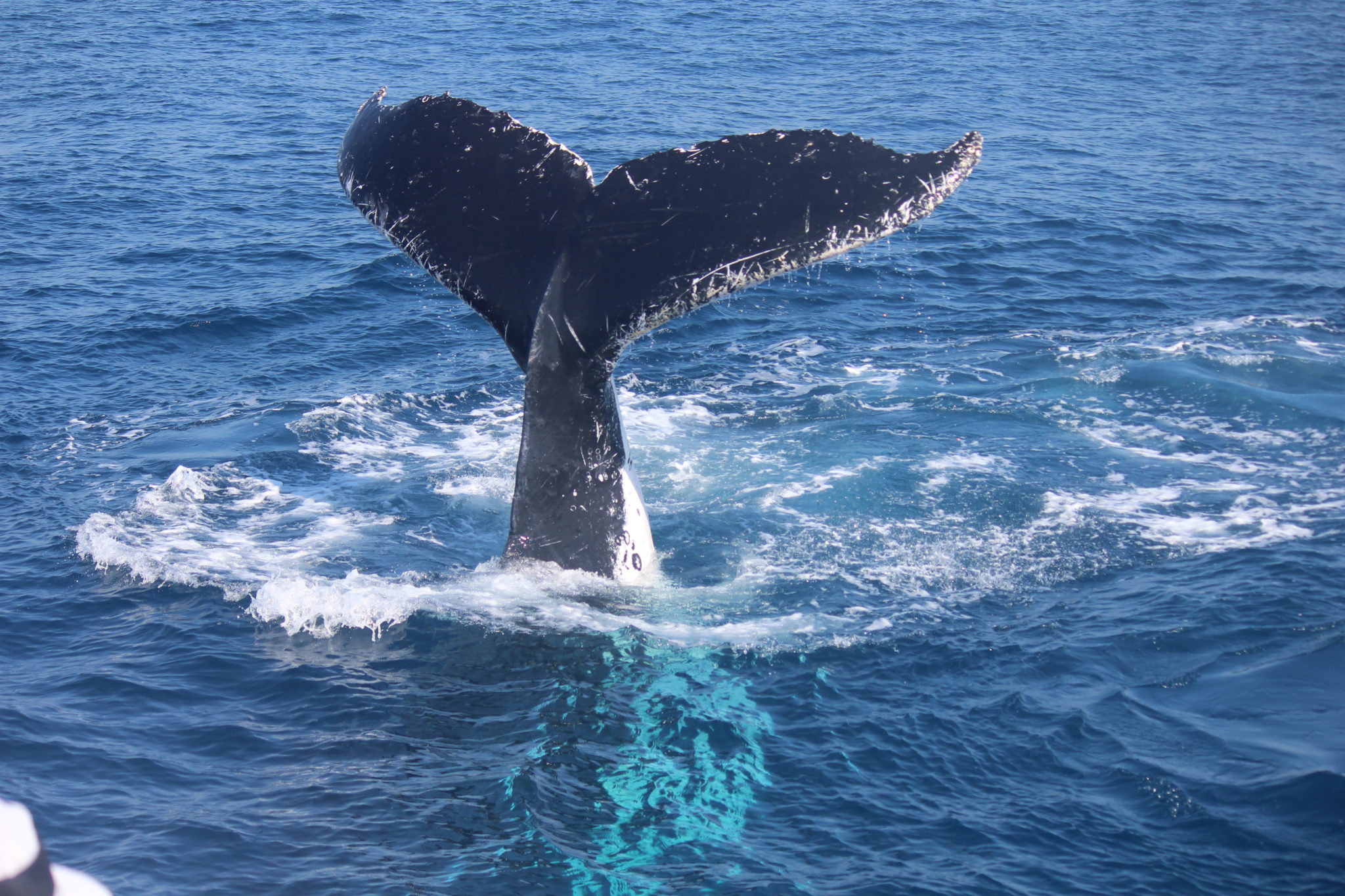Adolescent Whales
The adolescent (juvenile) stage runs from the moment the calf is weaned to when it reaches sexual maturity.
Once weaned, juveniles start to mix with whales of the same age and gender. Male juvenile whales will form bachelor pods and leave their original pod. They will start searching for sexually mature cows, female whales, with whom to mate. Female juveniles also start exploring outside their pod, but they are more likely to return to their mother.
Adolescent humpbacks begin to travel with other groups or in pairs. Before they begin mating, their lives largely consist of feeding and no doubt playing. They eat by filter feeding through their baleen plates. Preying primarily on small fish, plankton, and krill, the average humpback whale consumes 2000-2500 kg of food per day. Sometimes, whales in pods will hunt using a technique known as the “bubble net,” in which bubbles slowly released from their blowholes form a “net” to gather their prey.
Adult Whales
The adult whale stage starts when the whale reaches sexual maturity. Around 6-10 years of age, a humpback whale becomes sexually mature, ready to start breeding. Males at reproductive age are between 12 and 16 meters in length. Females measure roughly 14-15 but may grow as large as 18 meters!
To attract a mate, male humpbacks display their prowess through breaching, blowing bubbles, singing, and occasionally clashing with other males. Once a pair has decided to mate, they will swim together and move in motions like diving and rolling that resemble a playful courtship.
Breeding often takes place seasonally while migrating to warmer waters and that is what we are seeing of the beautiful mammals. This ensures their calves will be born in the warmer temperatures compared to what they are used to. Both genders start looking for mates to breed with.
The baby whale is born about a year later on their next migration up the coast. Adult female humpbacks do not give birth every single year, but typically every two or three years.
Mating also takes place every two to three years for the cow as her gestation period lasts for between 10 and 14 months.
Males produce a “song” which can last between 10-20 minutes. They repeat this for hours at a time. All the males in the group sing the same song for that season. A new “song” is produced the following season. It is not clear, but scientists think the song could be part of the mate ship.
If you’d like the chance to experience the magic of humpback new-born’s playing alongside their parents this whale watching season, and also the older humpbacks breaching and tail slapping, feel free to give us a call on 0412 155 814 or email us on – info@sunshinecoastafloat.com.au. You can also book online if you wish.




